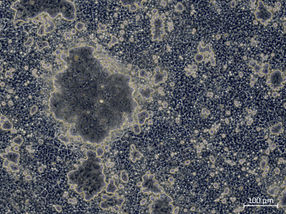Re-creating the original colors of treasured ivory carvings from the ancient past
Advertisement
The fabled ivory carvings from the ancient Phoenician city of Arslan Tash — literally meaning "Stone Lion" — may appear a dull monochrome in museums today, but they glittered with brilliant blue, red, gold and other colors 2,800 years ago, a new study has confirmed after decades of speculation. It appears in the ACS journal Analytical Chemistry.
Ina Reiche and colleagues explain that these carvings are rare, housed in museums like the Louvre, and art experts regard them as the most beautiful ivory carvings of the era. Experts long believed that the lion heads, amulets and other objects were brightly colored, rather than the bland beiges and whites that remain today. But until recently, there was no adequate way to test the ivories for traces of pigment without damaging these priceless objects.
The scientists describe how a non-destructive testing technology brought to life traces of red, blue and other pigments — and gold gilding — allowing re-creation of the long-vanished colors that decorated the original ivories. In addition to contributing to a new understanding of the Phoenician carvings, the technology could be used to glimpse the original paintings on other objects, the authors note. Those include the Elgin Marbles, the classical Greek marble sculptures that originally were part of the Parthenon and other buildings on the Acropolis in Athens.
Other news from the department science

Get the chemical industry in your inbox
By submitting this form you agree that LUMITOS AG will send you the newsletter(s) selected above by email. Your data will not be passed on to third parties. Your data will be stored and processed in accordance with our data protection regulations. LUMITOS may contact you by email for the purpose of advertising or market and opinion surveys. You can revoke your consent at any time without giving reasons to LUMITOS AG, Ernst-Augustin-Str. 2, 12489 Berlin, Germany or by e-mail at revoke@lumitos.com with effect for the future. In addition, each email contains a link to unsubscribe from the corresponding newsletter.































































